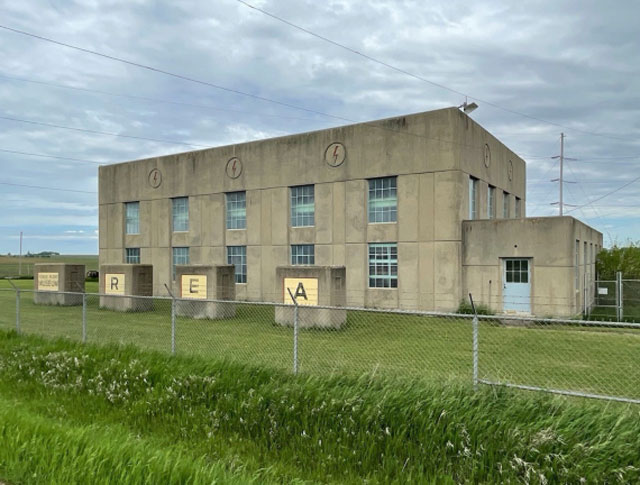Former power plant in Franklin County named national historic landmark
December 18th, 2024 by Ric Hanson
(Radio Iowa) – A former power plant near Hampton that was part of the national effort to bring electricity to rural areas of the country in the 1930s is now a National Historic Landmark. Franklin County Historical Society board member Rick Whalen says the Rural Electrification Administration helped get it built. “This is one of the first sites that was built with the R-E-A money from the New Deal when Roosevelt introduced that, and it was the first one west of Mississippi financed by that,” Whalen says. The loan to build a diesel-generated power plant was approved on December 30th of 1936, and it was owned by the Cornbelt Power Cooperative. It was decommissioned in 1950 and a local businessman bought it before eventually giving it to the Franklin County Historical Society. Whalen says there are two other plants still standing, but they were converted to other uses. He says a key to the historic designation is the plant is very close to the way it looked when it operated, with the original generator and control panels.
“So it’s a tie back to the rural area becoming electrified, and any all the coops in the country can basically trace our roots back to a plant like this,” he says. “And since it’s the only one left it deserves, I think, to be called a National Historic Landmark.” Whalen says the plants like this one brought the rural areas up to the same standard of living as people in the cities. He says there were some who didn’t think rural electrification would work. “The utilities were offered the same deal of low interest money to build into the country, but turned it down. Didn’t think the farmers would ever use enough electricity to make it worthwhile,” Whalen says “So the coops were formed, and the government, through the R-E-A, loaned the farmers money, and they formed the coops and put up the poles and wires and got things electrified.”

The REA plant near Hampton. (photo from U.S Parks Service)
Between 1935 and 1950, the percentage of rural households with electricity rose from eleven percent to 78 percent in large part due to the R-E-A and the rural electric cooperatives. Whalen is excited to finally get the historic designation after four years. He met with a panel in September that held the first vote to move it forward. “An advisory committee, it was made up of nine doctors and a Mr. Smith. They’re all professors of, I suppose, different disciplines in history. And they voted ten to nothing to move it on. And then last December 8th, here last week, they had another committee meeting, and they approved moving it on to the Secretary of the Interior, which resulted in that getting signed,” he says. Whalen says several organizations help contribute money to work on the presentation that led to the designation. The building was listed on the National Register of Historic Places in 1990. Whalen is looking for one more designation.
“We’re also looking at trying to get it designated as the national R-E-A Museum. We’ve got a ways to go to do that we’re not sure how exactly you know, approaching, but that’s a long-term goal with that,” Whalen says. Whalen says they will be getting a plaque for the National Historic Landmark designation and are looking to have a ceremony acknowledging it sometime in the spring.





